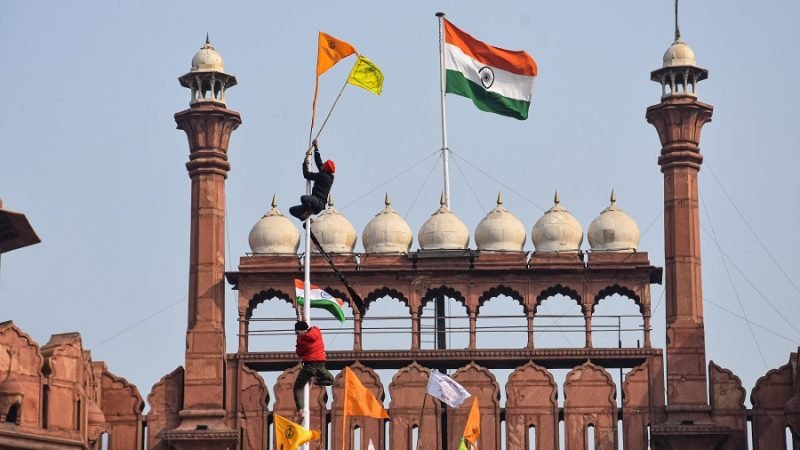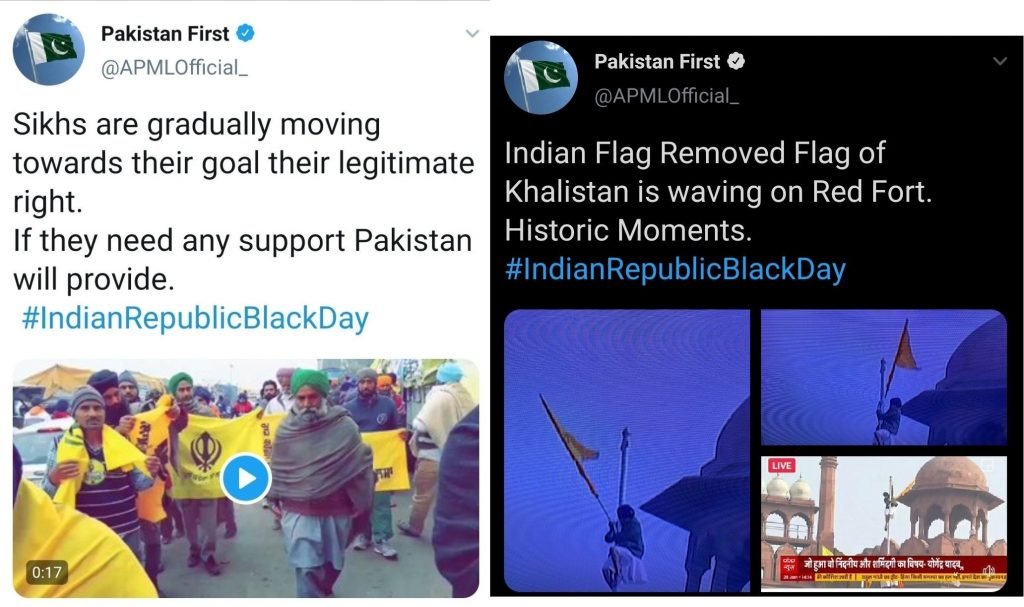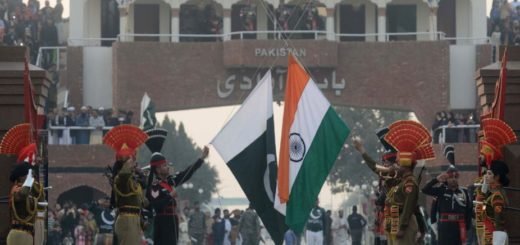Republic Day celebrations gloomy for India: Protest unfolds into waves of chaos

The farmers protest in India have taken an ugly turn as the Republic Day celebrations succumbed to protests all across the capital. Despite the ragging pandemic and severe protests witnessed across various parts of New Delhi since December, the Republic Day celebrations were not halted or postponed per se. India celebrated its 72nd Republic Day, yesterday but the Farmers Protest overshadowed the celebrations and made it quite a historic moment. To analyse the protest, one has to understand the nuances of the various farm bills which were passed by the Lok Sabha as well as the Rajya Sabha in November. Much to the layman’s understanding of the three bills introduced in the parliament, the agricultural sector was left at the hands of corporations and market forces. Agriculture as a strong source of livelihood till day faces stiff challenges and reforms in the sector was called for. However, various farmers union have shown their anger and discontent towards the government as they feel the law will not benefit them, but rather rip the remaining hope for income as market forces cannot alone be the sole factor for price determination and supply.
However, as the protest across the capital and the neighbouring states unfolded, the ‘Khalistan Movement’ found an indulgence within it. The Khalistan movement is a call for a separatist state for Sikhs which would include the state of Punjab in India. Even in the past, questions were raised in terms of the credibility of the movement which incited violence across the globe. Canada which has the largest Sikh population abroad had seen severe protests and acquisitions relegating the country’s Sikh population but it till date remains a question of concern that why the farmer’s protests have been associated with this movement.
A parallel is now being drawn with what happened in the US Capitol on 6th January and yesterday at India’s famous Red Fort, as a video went viral of a protestor installing a ‘Kesari’ flag in an empty flag stand. The news later clarified that the saffron flag is a Nishan Sahib flag which is usually hoisted in Gurudwaras and sacred to Sikh religion. But the ‘forceful’ installation was uncalled for, as it looked more of an imposition rather than cultural assimilation. This installation of the flag at the Red Fort received a mixed reaction from the population and a question that bothered every single person is ‘Whether these are the farmers’ which had been protesting since the last two months?’

Parts of the capital witnessed a shutdown of Internet and imposition of Section 144 in certain places in and around the capital. The clash between the ‘protestors’ and the Delhi Police led to casualties on both sides. The matter of contention yet remains why farmers protests are being relegated by these pro-Khalistanis. The infamous US-based organization ‘Sikhs for Justice’ was banned by the Indian Government in 2019 and any activity that is undertaken by them was considered a ‘threat’ to the national integrity of the country. Even amidst the protests, the National Intelligence Agency had filed a charge sheet against 10 individuals to ban them from the protest. Punjab CM Amarinder Singh appreciated the move and stated that this is the first step towards peaceful and justified protests for the cause of the farmers. Does the contention now remain why the farmers’ protest is being overshadowed by the Khalistani Movement?
As the protest unfolded in what was not anticipated, it had reached outside the borders of India. Report soon surfaced of vandalism at the Indian Embassy in Italy whereby anti-social elements of protests were scribbled on the walls of the building. ‘Long Live Khalistan’ were scribbled on the walls and it did raise a question yet again on the nature of the farmer’s protests. Interestingly enough, the incident happened before Republic Day, but this piece of news found itself to be broadcasted post-Republic Day havoc. Understanding the gravity of this, Indian officials stated that it was an act carried out by the Khalistanis in the ‘stealth of the night’. The Indian officials in Rome called for the Italian authorities to check for the safety and security of Indian diplomats. The act has been recognized as ‘perpetuated vandalism’ and following similar breakouts across the globe, India congratulated the UK government for its swift action to stop any prompt of violence being incited by the Khalistani miscreants. However, not all countries assisted the Indian government to do away with Khalistani elements.
A viral tweet under the hashtag of IndianRepublicBlackDay was started by a Twitter account named Pakistan First. The account was first to tweet on the removal of the Indian flag and the installation of the Khalistan Flag at Red Fort. It also mentioned this sight to be a historic movement and came in support of those who would lead the Khalistan Movement. The tweet of course was deleted later. The same evening Twitter had suspended almost 300 accounts on the ground of violation of their community policies. The incident yesterday at Red Fort was unanticipated both by the citizens as well as the Indian government.

The matter stands at an uneased position now and has led to radicalization as well as the polarization of ideologies within the masses. The input of vandalism and sensationalism have aggravated the issue to another extent. The havoc created on Republic Day would surely find a place for itself in history, but has the farmers protest in the country lost an edge due to the behaviours of the miscreants? The Khalistani movement somewhere have overshadowed and now holds the bastion of charge in the protests and this is precisely where the intervention from the government is called for. The essence of dissent must also include responsibility because there lies a silver lining between protests and riots. News channels across the globe have been creating sensational news pieces out the incident reported yesterday, and this does put the Indian democracy into the limelight – the question of how far dissent can and cannot be regulated is also under the pin for debate.
Remembering Dr BR Ambedkar, designated as the father of the world’s longest Constitution, the right to Dissent is enshrined within it. As a democracy, it is the birthright of people to protest and demonstrate against policies which are unfavourable to the larger populace of the country. Since the inception of our Republic, the country has witnessed several and severe protests. Generations have lived and relived the spirit of democracy over and over again. India is a land of democracy—protest and revolution. However, given the circumstances, the impetus lies with the Indian government to identify the miscreants and establish stability between the elements of a democratic model. The miscreants must be recognized and dealt with iron gloves. As India celebrated the 72nd Republic Day, it would be significant enough for its history to witness where the farmers’ protest would end.


















